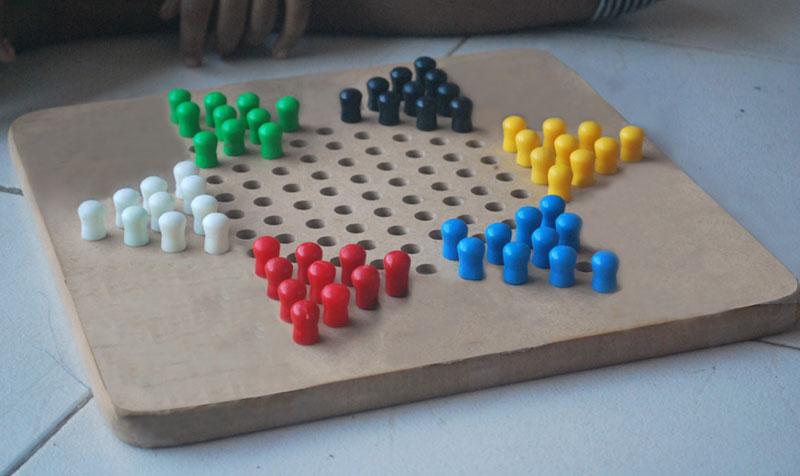Design Resource
Indian Games
Culture of Play
by
Introduction
Chinese Checkers is a strategy board game played by 2 – 6 players and is best enjoyed by kids aged 7 years and above. This game was invented in Germany as Halma, and later, the simplified version was named as Chinese Checkers in the United States. However, many historians dispute the fact that the game originated in Germany and believe that it originated in the United States itself. Nevertheless, though this game did not originate in India, it is widely played by urban Indian kids since generations.
How to Play
The Chinese Checker board is in the shape of a six-pointed star. Each point of the star is an equilateral triangle consisting of ten holes (four holes on each side). Each triangle is of a different colour and there are six sets of ten marbles/pegs with corresponding colours of the triangle. The interior of the board is a hexagon with five holes on each side. The whole star-shaped board is filled with holes each connected with straight lines to its adjacent holes. The objective of the game is to be the first player to move all 10 pegs across the opposite triangle by jumping over other pieces. The destination triangle is called ‘home.’
To play the game, each player decides a color. He/She arranges all 10 pegs in the holes of the corresponding triangle. The youngest player usually begins the game and the other players take their turns in a clockwise direction. In a turn, players move a single peg of their color to its adjacent hole or jump over any peg to a vacant hole directly beyond it. The player may choose not to jump over certain pegs even if he/she has the choice and can bring his/her turn to the end.
The players strategize to build a long hopping path from their starting point to their home. Other players can block these paths by placing their pegs and hindering the movement of another player along these paths.
Conclusion
The game of Chinese Checkers is a great entertaining game that provides space for social interaction while developing logic skills and critical thinking skills in children. In this game, kids also learn to strategize, plan and compete in a healthy way.





